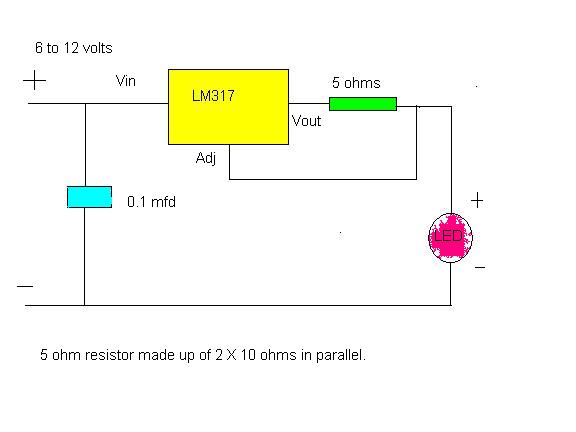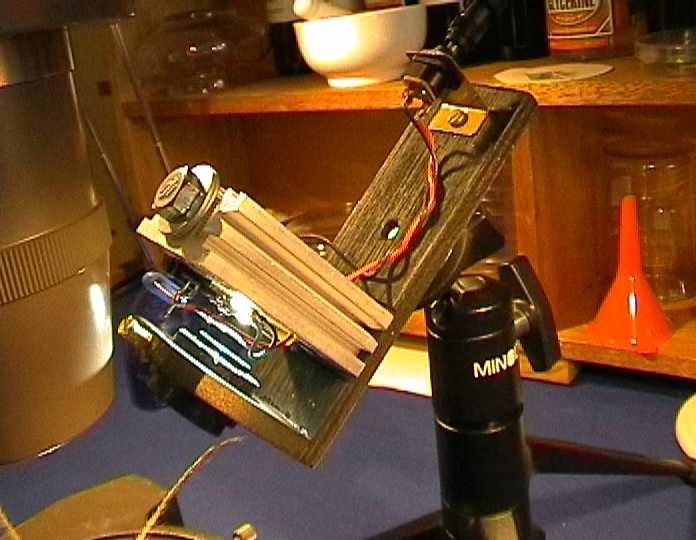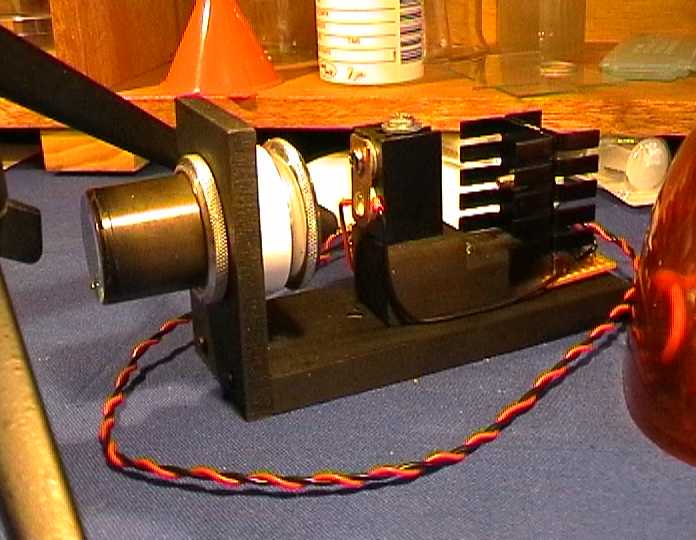
|
Homemade LED Light Sources for Epi-illumination. |
In repeated efforts to see a specimen illuminated from above (epi-illumination), I seldom found I could concentrate sufficient light for a good image. Two high brightness LEDs either side of the objective did quite well, but not good enough. Then I found the high brightness LEDs mounted into flexible wands for use as a light on laptops. These I could position a bit closer to the specimen - still not enough light.
Obviously what was needed was a small projector which could be positioned back from the objective, but at a high angle in order to improve the down lighting.
Experiments with the few lenses I had available seemed to indicate that either an old condenser, with the top element removed, or a reversed eyepiece could be brought into service. The projecting distance needed was 3 to 4 inches. The condenser gave a larger spread of light, better suited to the stereo microscope.
For the light source proper I chose a 1 watt LED as sold by Messrs Dick Smith (in Australia). These LEDs are similar to Luxeons, except they are unmounted, and half the price!
Additionally, a constant current source is required along with suitable heat sink(s).
Very few components are actually needed. The current source is a re-configured LM317 voltage regulator, along with resistor and capacitor. All this mounted on a piece of Vero board. For my first effort I used an old heat sink from a wrecked TV, mounting both the regulator and the LED on the same sink, although both should be electrically isolated. My second version uses separate heat sinks. Originally I also used a fan, but found this an unnecessary complication. The LM317 gets to about 50 degrees but the LED, although a heat sink is necessary, runs much cooler.
Usually I use these light sources mounted on a camera table tripod.
The advantages to me, are that the whole thing costs about $A20 (£8), takes up very little table space, gives a really good light (daylight colour) and projects no heat to the specimen. I leave it on for hours at a time!
Construction uses small pieces of wood, and whatever else will hold things in place.
Comments
to the author
are welcomed.

Circuit
diagram; should work anywhere from about 6v to around 30v.

Light
source using condensing lens and common heat sink. Space behind would
accommodate a computer type micro-fan.

Light source using two separate heat sinks.
Published in the April 2007 edition of Micscape.
Please report any Web problems or offer general comments to the Micscape Editor .
Micscape is the on-line monthly magazine of the Microscopy UK web site at Microscopy-UK
© Onview.net Ltd, Microscopy-UK, and all contributors 1995
onwards. All rights reserved.
Main site is
at www.microscopy-uk.org.uk
with full mirror
at www.microscopy-uk.net
.